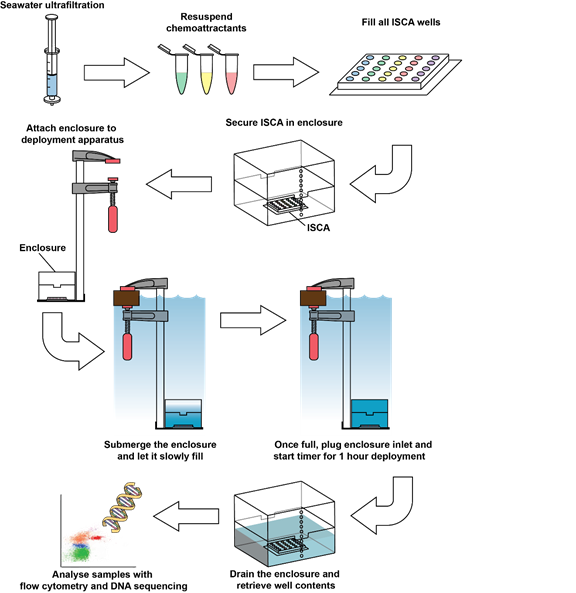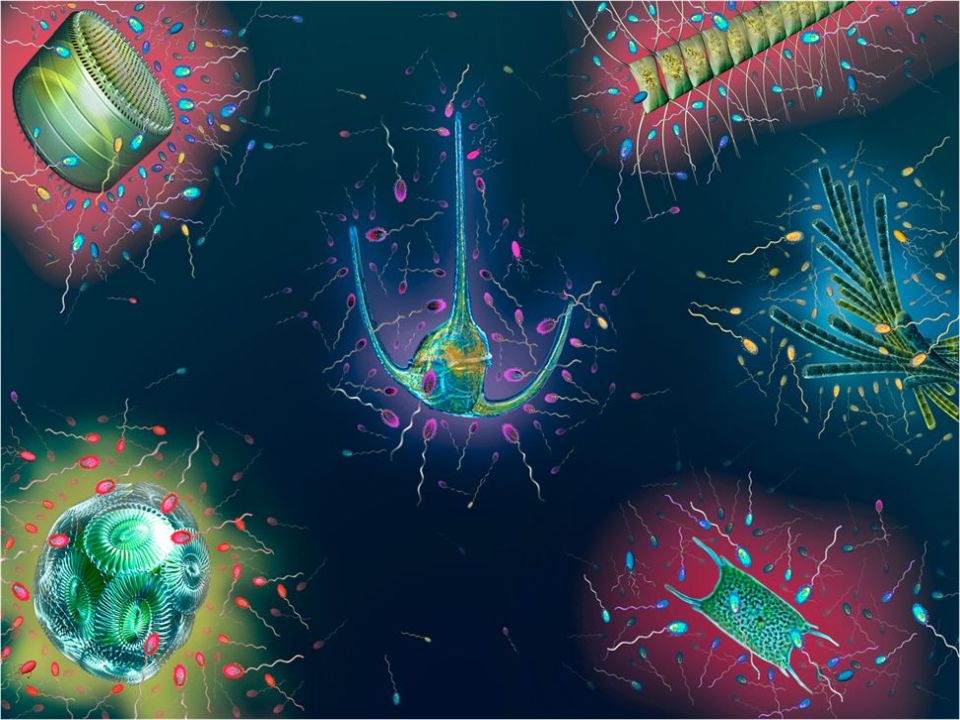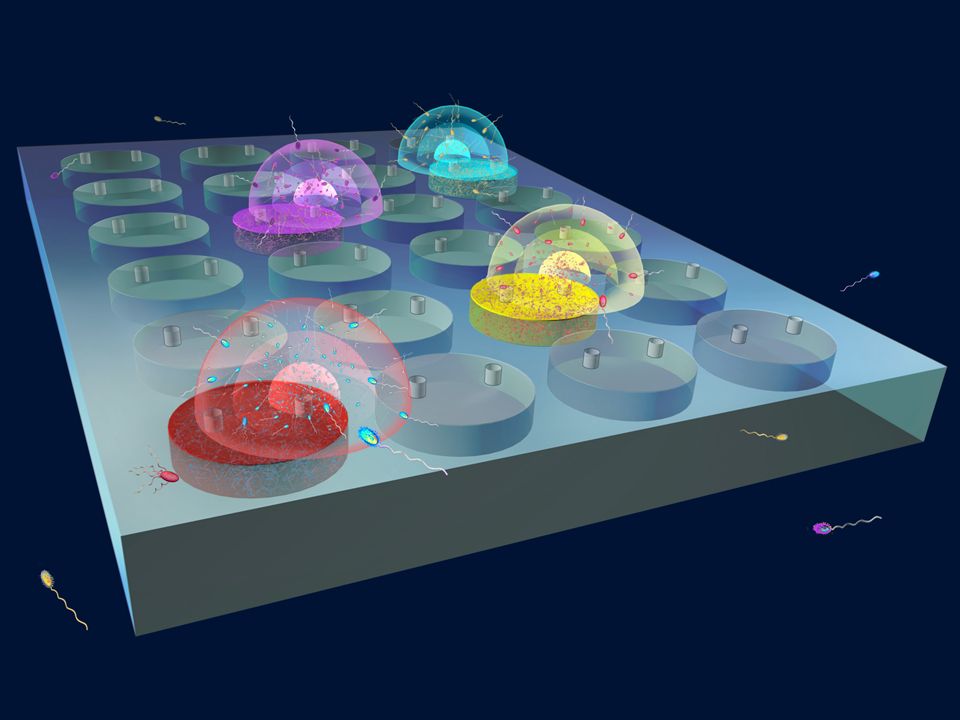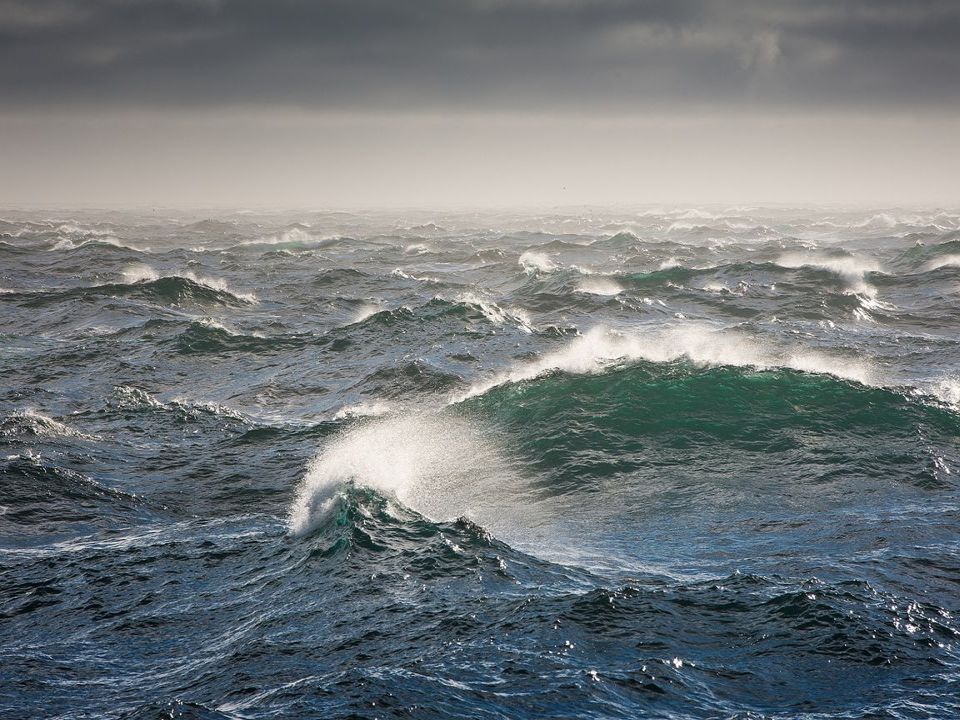Uncategorised
Microscale Experiments
Microscale experiments to understand a microscale world: Combining microfluidics and ecogenomics to investigate microbial processes in the ocean
Microorganisms control the productivity and chemistry of the ocean at global scales, and as a consequence oceanographers have traditionally studied marine microbial processes over large space and time scales. However, many of the ecological interactions and chemical transformations that underpin ocean-scale processes occur at microbial scales, within settings that occupy only a fraction of a single drop of seawater. Within this microscale world, marine microbes experience and exploit a seascape of localized resource hotspots and interact with one another within cell-cell scenarios. The sum of these microscale events ultimately shapes bulk seawater chemistry, meaning that sub-centimeter processes may profoundly influence the large-scale function of the ocean. Yet, studying these important microscale processes with traditional oceanographic equipment is logistically impossible, so our project aims to develop new tools and analytical approaches to gain the first view of the ocean from a microbe’s perspective. Our objective is to develop new microfluidic technology for experimentally manipulating the ocean’s chemical seascape of the ocean at the microscale and in situ. Using these experimental platforms we will examine how microbial behaviors and physiological responses, including motility, chemotaxis and rapid transcriptional reactions allow natural populations of marine microbes to prosper within heterogeneous microscale seascapes. To determine the biogeochemical consequences of these processes, which are typically ‘averaged out’ by standard oceanographic sampling and analysis protocols, we aim to develop new ecogenomic approaches for examining the composition and functional capacity of microbial communities within very small sample volumes. We will use these new strategies to address several, previously intractable, questions that are relevant to our understanding of both marine microbial ecology and ocean biogeochemistry. Specifically, we will apply this microscale approach to: decipher the ecological interactions underpinning bacterial-phytoplankton associations in the ocean; reveal the temporal dynamics of microbial gene expression in response to localized resource pulses; and examine how microenvironmental chemical cycling processes scale up to affect ocean biogeochemistry. Our hope is that these microscale experiments will provide exciting new viewpoints for understanding the roles and influence of microbes in the ocean.
Work Underway
The In Situ Chemotaxis Assay
Fabrication and deployment of the in situ chemotaxis assay (ISCA). Polydimethylsiloxane (PDMS) is cast onto a 3D-printed mold and cured overnight. The solid PDMS, containing multiple wells, is then excised and plasma-bonded onto a glass slide (100 mm × 76 mm × 1 mm). Each well has an independent connection to the external environment via a port, through which chemicals can diffuse and microbes enter. Upon deployment, the ISCA produces chemical microplumes that mimic transient nutrient patches. Chemotactic bacteria respond by swimming into the wells of the device, and after collection can be enumerated by flow cytometry and identified by sequencing.
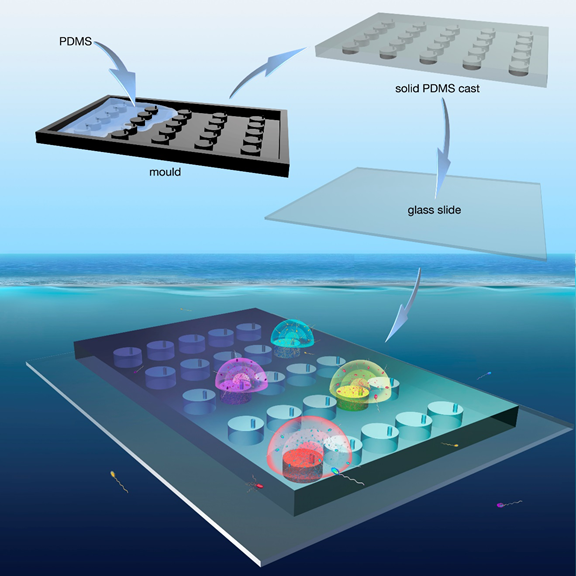
Fabrication and deployment of the in situ chemotaxis assay (ISCA).
Chemotaxis by marine isolates in the laboratory. (a) Accumulation of fluorescently labeled marine isolates within ISCA wells quantified through video microscopy. The solid line represents the mean cell concentration (n=3) over the imaging volume normalized to that in the surrounding medium and the shaded area is one standard deviation around the mean. Red: V. coralliilyticus swimming into a well initially filled with 10% Marine Broth. Black: V. coralliilyticus and FASW (filtered artificial seawater; control). Purple: M. adhaerens ΔfliC and FASW (non-motile control; almost indistinguishable from zero). The triangle on the right-hand axis indicates the chemotactic index, IC, for V. coralliilyticus after 60 min, calculated as the ratio of the number of cells responding to the chemoattractant and to the FASW. (b) Representative images taken at mid-depth of the well after 60 min. The outline color indicates treatment, with the same color scheme as in panel (a). Note the near absence of cells from the controls (gray and purple). (c) Average accumulation through well depth and time of fluorescently labeled V. coralliilyticus in response to 10% Marine Broth. (d) Average accumulation of fluorescently labeled V. coralliilyticus in response to FASW. Minor accumulation shows that random motility does not contribute significantly to the final concentration of cells in each well. The color bar applies to both panels (c) and (d) and indicates the concentration of cells, C, in each image normalized to that in the surrounding medium, C0. The resolution is 80 µm in the depth and 1 min in time.
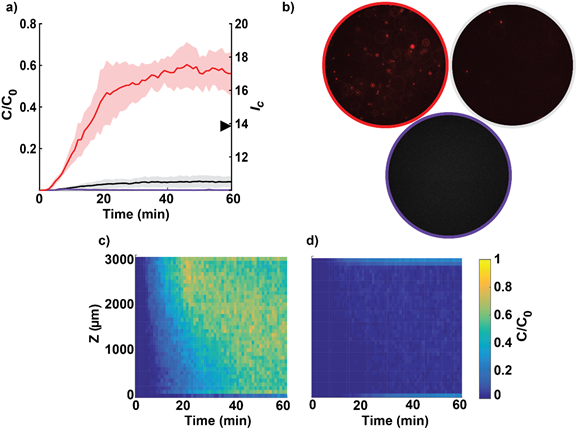
ISCA: Chemotaxis by marine isolates in the laboratory
Flow diagram showing the experimental procedure used for field deployment of the ISCA
